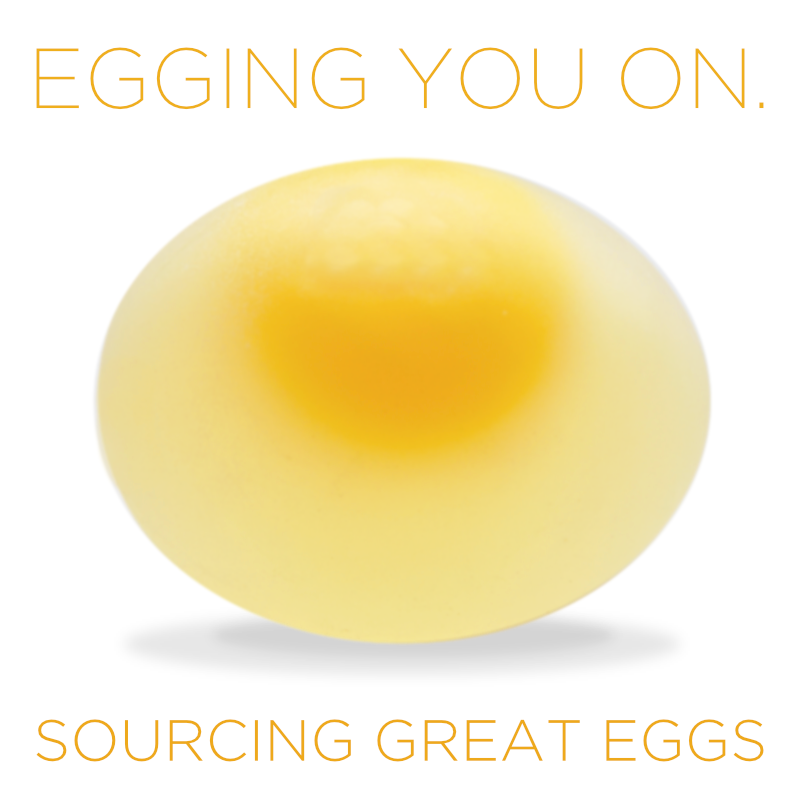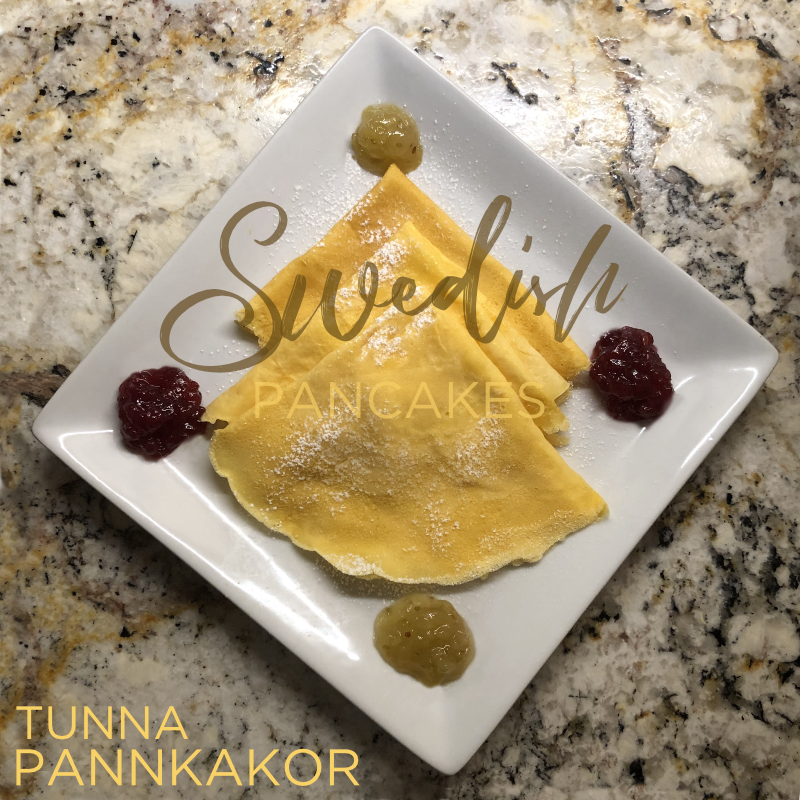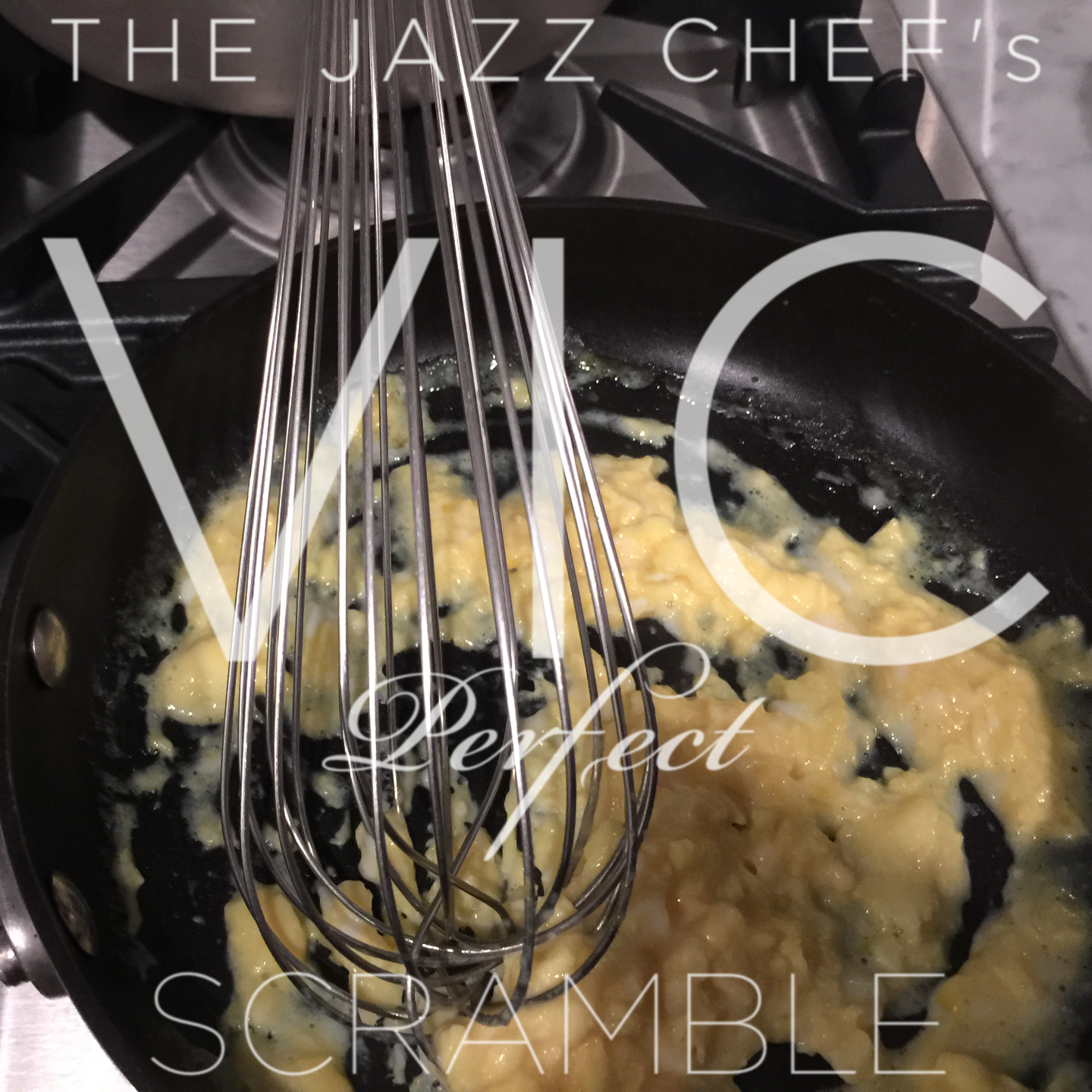
Years ago, Trader Vic’s, the legendary restaurant at the Beverly Hilton in Beverly Hills, California, a place known for its tradition of employing top, top culinary practice, used to make such perfect scrambled eggs, I was told originally custom ordered by some movie mogul, that they ended up putting them on their dinner menu!
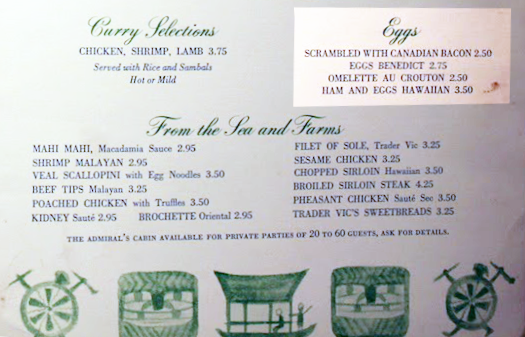 Discontinued and long forgotten, that scramble was some of the most expensive eggs ever produced, but they were light and yet gently creamy and perfectly risen, and my “gold standard” that I have worked decades to meet and beat.
Discontinued and long forgotten, that scramble was some of the most expensive eggs ever produced, but they were light and yet gently creamy and perfectly risen, and my “gold standard” that I have worked decades to meet and beat.
My perfect scramble is a tribute to these long-ago retired scrambled eggs of Trader Vic’s at the Beverly Hilton.
It made a nice, fluffy even egg, but, as I started cooking these dutifully the way that I had been taught, with a whisk and a ton of cream, I started to look for ways to shed a little unnecessary calories out of the family diet.
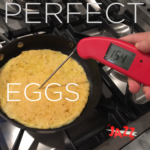 Before you begin, take a minute to read my article on Perfect Eggs, and the science that 99.95% of chefs, pro and home, ignore that will transform your egg dishes!
Before you begin, take a minute to read my article on Perfect Eggs, and the science that 99.95% of chefs, pro and home, ignore that will transform your egg dishes!
Great scrambles require great eggs. The cheapies don’t work. Read my article on how to shop for them, avoid the egg scams, and buying unsafe eggs.
INGREDIENTS
(Serves One; Scales Up Evenly)
- 1 Vital Farms Pasture-Raised Egg
- 60 ml / 1/4 cup egg white
- 30 ml / 1 tbsp cream (Vegetarians/Lactose Intolerants can sub solid coconut oil)
- 10 ml / 2 tsp milk or water
- 1 ml / 1/4 tsp Himalayan pink salt or to taste;
- Sm. pinch SpiceJungle white pepper
- 5-10 ml/1-2 tsp Organic Valley Purity Farms Ghee
MISE EN PLACE
- Small work bowl
- French whip/whisk
- Silicone spatula (optional, see recipe)
- Small non-stick omelette pan (Size up pan if expanding servings)
- Silicone brush
- Spoon for ghee
- Serving plate
HOW-TOs
- Crack your eggs into the work bowl, and see what you’re working with.Eggs are no different than meats. We read beef for marbling, things that need to be trimmed, etc. How is your egg looking?Viscosity: Is it thick or thin? If it’s thin, probably best to avoid adding the milk. If it’s thick, add the milk or water.If you want it richer, like the real Trader Vic eggs, add a tsp or two more cream, and add a little time for cooking off the water. Add the remaining ingredients other than the ghee to the work bowl.
- Scramble using a french whip/whisk in a circular motion, just enough to integrate it, aerating the mixture by lifting it up just a bit in that motion as you come down on the opposite side of the work bowl.
- Bring an omelette pan, small for one serving, medium large for more, to 68°c/154°F by setting your burner on a low simmer for gas, and low-med (2-3-4) for a coil or induction range. Use a digital thermometer to get your read. You will have to play with this a bit to find the sweet spot.It’s not a good idea to shortcut: High heat the pan and then bring it back down. A ceramic-titanium pan on a versatile gas range can pull that off. Most other ranges superheat one or more parts of lesser pans and you end up with stuff sticking and burning because you’re overcooking again.Low and slow is the way to go. Just prep other things and check your pan periodically.
- Spoon the ghee out of its container into the pan. Take the silicone brush and grease the pan on the bottom and edges.
- Using the whisk keep moving and turning the egg, frequently, yet gently. Scrape it off the bottom and sides of the pan. I harp on “gentle” and “frequent” whisking because we’re trying to not overly disturb the process of letting the amino acid chains of proteins in the eggs form the micro lattices that retain the natural water in the egg and create pockets that capture the steam from that water at the beginning of the process.You don’t need to be a helicopter cook for this kind of eggs, and hover over them. This isn’t a high temp operation, so the eggs don’t cook as rapidly as you’re used to. Prep other things, and come back every minute or so in the first three-ish minutes.After the structure develops and rises, you will see steam start to rise out of the eggs, and they will gradually tighten up.
As they start to form in that 4-5 minute range, you will need to spend more time on them, as the eggs have developed structure. Here, if you like your eggs big and clumpy, is a good place to change to a spatula to continue turning them in larger batches, and still get more lift and lightness.
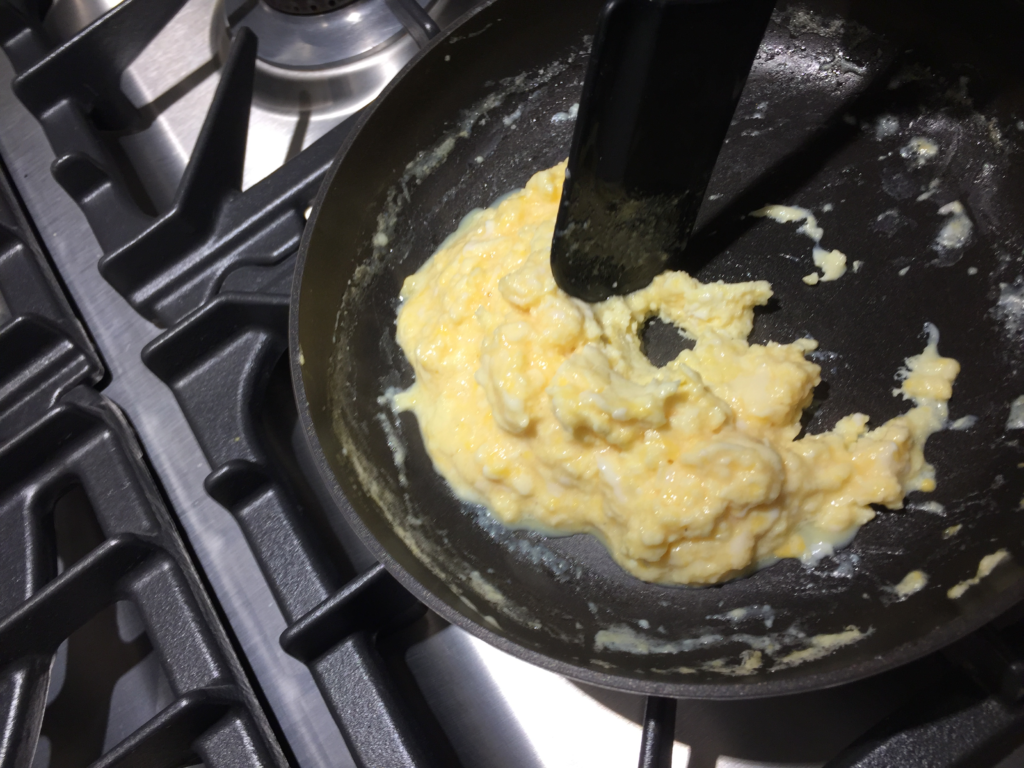
Where you finish them depends on your texture preferences.There are your soft egg lovers (me), and there are your well-done egg lovers (my oldest and my wife). Classic Vic was looser and softer.They’re done when there isn’t any a lot of liquid leaking from the mix, as the excess water is now gone. We’re cooking slowly though, so eggs are like steaks:
They tend to cook for another minute or two after coming off the heat, so time and practice with this method will give you your own feel of how it works best on your equipment.





